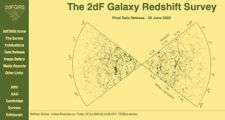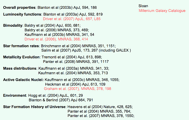(ii) "Morphology"
Concentration: = petro90/petro50
where these are radii enclosing 90% and 50% of the petrosian flux
Goodness of fit Likelihoods: deV_L, exp_L, star_L
use f(deV_L) = deV_L / (deV_L + exp_L + star_L) > 0.5 to select early type (deVauc) profiles.
Ellipticities and PA:
Measured from second moments or 25th isophote shape.
There are also many flags to identify problems with the analysis of a given object.
(iii) Spectra
Many emission & absorption line strengths, and continuum strengths
Redshifts, from both emission and absorption lines
Velocity dispersion from absorption lines (only early type, bulge dominated, spectra).
Classification of type (early, late, agn, etc) by comparing to a number of templates.
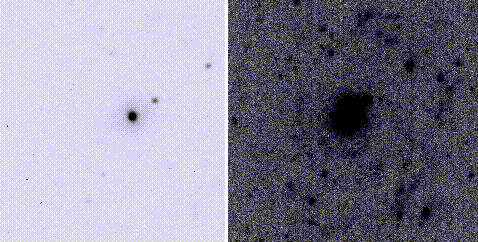
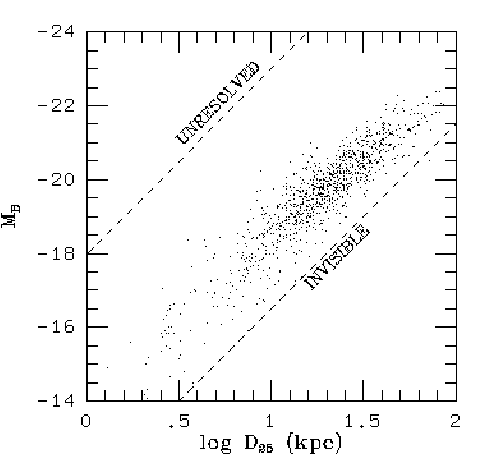
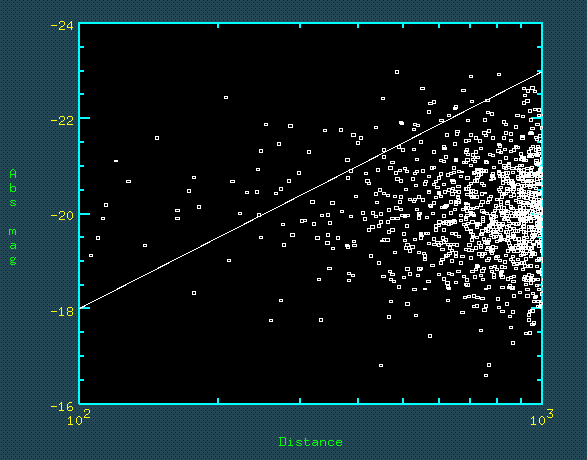


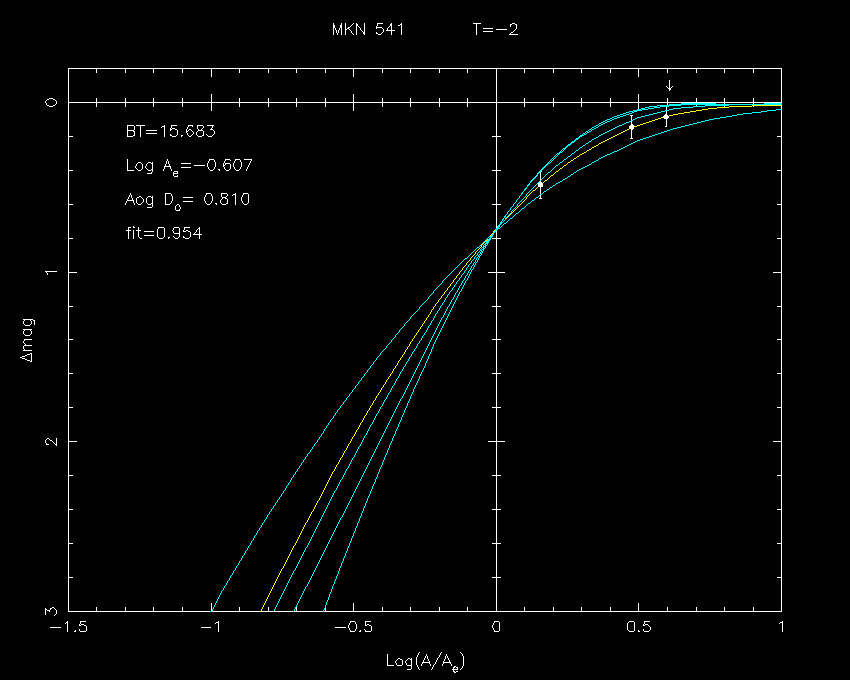

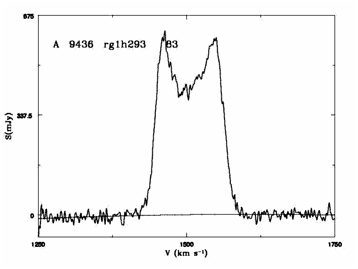

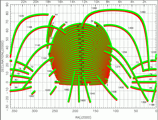

 (x2 + 1)] ) function (see reference).
(x2 + 1)] ) function (see reference).
 deVMag, expMag
deVMag, expMag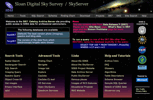
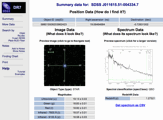 There are "Finding Chart" (o-link) and "Navigate" (o-link) tools that accept a coordinate.
There are "Finding Chart" (o-link) and "Navigate" (o-link) tools that accept a coordinate.